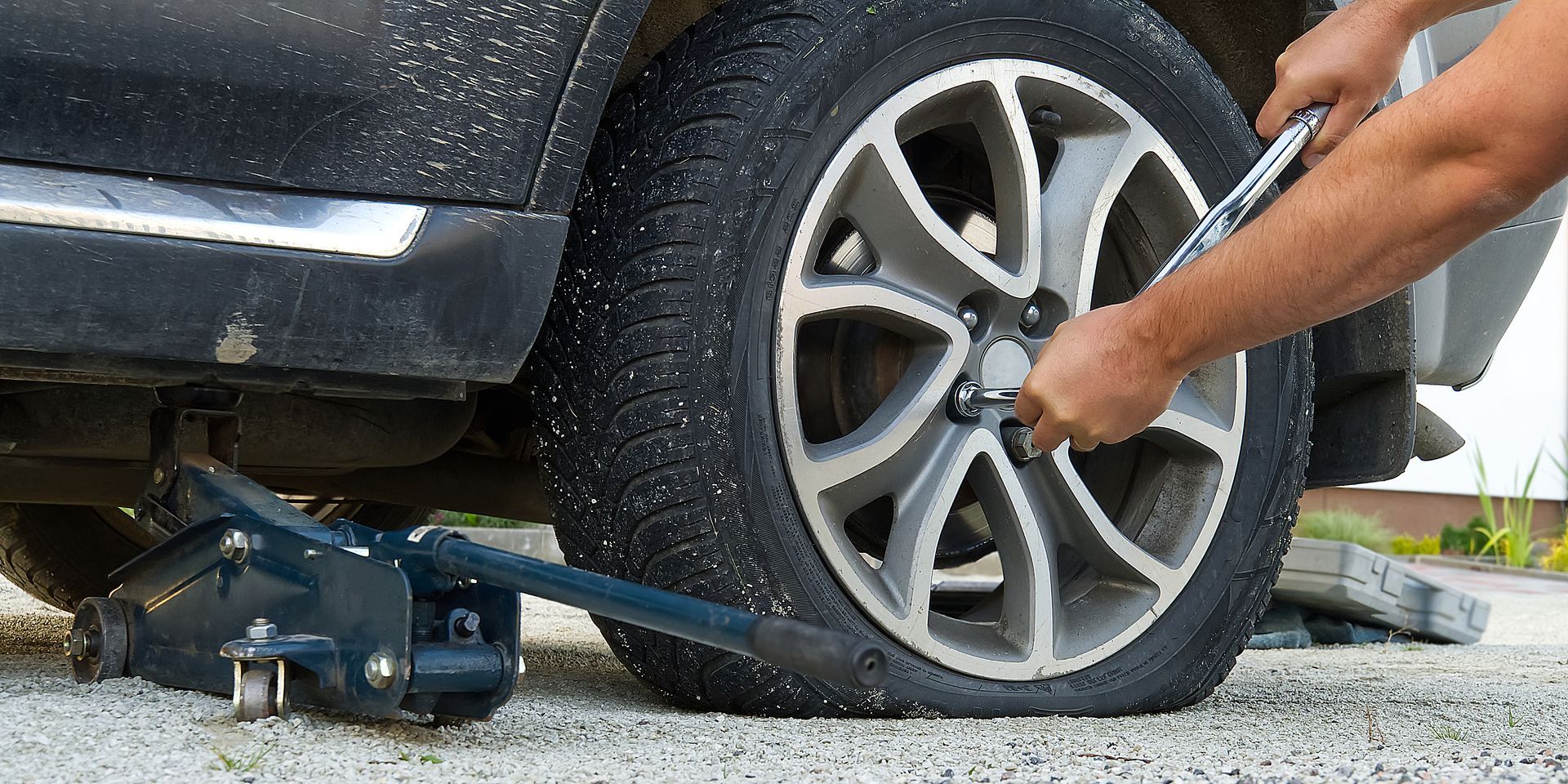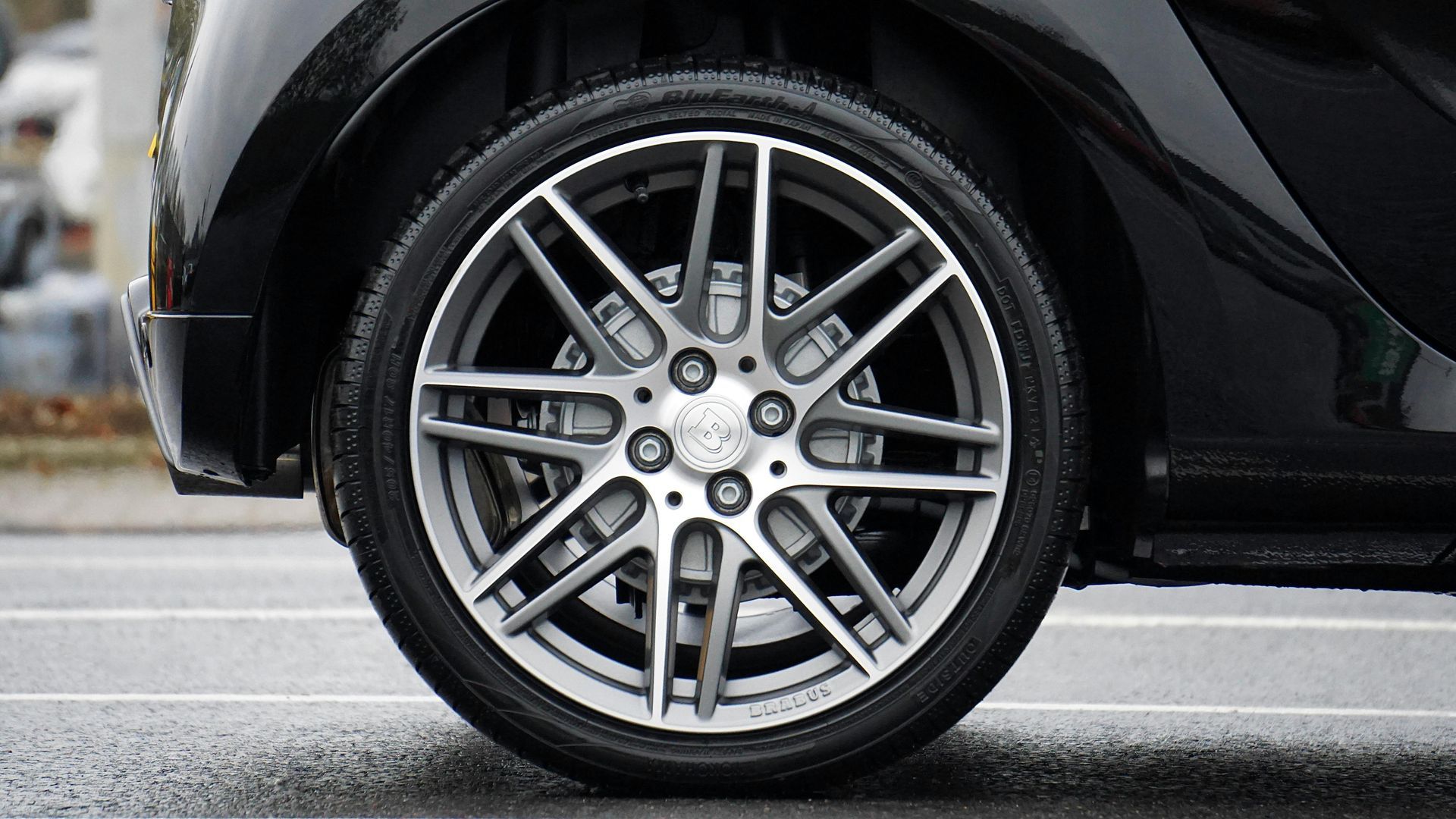Did you know that a puncture near the sidewall of a tire can be a major cause for concern? It's not just a matter of fixing the tire and moving on. The sidewall of a tire plays a critical role in its overall integrity and safety, making it essential to understand the limitations and guidelines for patching sidewall damage. Let's explore this topic further to find out how close to the sidewall a tire can be safely patched.
When it comes to tire repairs , especially those near the sidewall, it's crucial to assess the severity of the damage. The sidewall provides stability and support to the tire, and any compromise in its integrity can lead to safety risks on the road. Understanding the guidelines and industry standards for sidewall repairs is essential to avoid potential blowouts or tread separations.
From our experience of over 10 years, we will delve into the topic of tire sidewall repair and explore the limitations and guidelines for patching sidewall damage. From understanding the critical role of the sidewall in tire integrity to discussing the safety concerns and industry standards, we will provide you with the necessary information to make informed decisions when it comes to tire repairs near the sidewall.
Key Takeaways
- The sidewall of a tire plays a critical role in maintaining its structural integrity and stability.
- The severity of sidewall damage determines whether a tire can be safely patched or if it requires replacement.
- There are industry guidelines for the safe distance between a puncture and the sidewall when patching a tire.
- Professional tire patching and DIY patching both have pros and cons that should be considered.
- Prioritizing safety and consulting with tire professionals is crucial for making informed decisions regarding sidewall repairs.
Understanding Tire Sidewall Damage and Repair Limitations
The sidewall of a tire plays a critical role in maintaining the structural integrity and overall safety of the tire. It provides stability and support, allowing the tire to perform effectively on the road. However, sidewall damage can compromise the tire's functionality and pose significant safety concerns.
The Critical Role of the Sidewall in Tire Integrity
The sidewall of a tire acts as a protective barrier, shielding the internal components from external forces and ensuring proper tire inflation. It also helps to maintain the shape of the tire and provides resistance against lateral forces during cornering. Moreover, the sidewall contributes to the overall strength and stability of the tire, allowing it to bear the vehicle's weight and absorb road impacts effectively.
Any damage to the sidewall can weaken its structural integrity and compromise the tire's performance and safety. Understanding the critical role of the sidewall emphasizes the importance of addressing sidewall damage promptly and appropriately.
Assessing the Severity: When Is a Tire Beyond Patching?
When assessing tire damage , it is crucial to consider the severity of the sidewall damage. Factors such as the size and location of the puncture are key determinants in determining if a tire can be safely patched.
Small punctures that are away from the sidewall and closer to the center of the tread can often be repaired without compromising safety. However, punctures near the sidewall or those that exceed the manufacturer's recommended size for repairs may render the tire beyond patching. In such cases, it is generally recommended to replace the tire to ensure optimal safety on the road.
Safety Concerns with Sidewall Repairs
Repairing sidewall damage comes with inherent safety concerns. Improperly repaired sidewalls can increase the risk of a blowout or tread separation, leading to a loss of control of the vehicle and potential accidents.
Furthermore, the sidewall undergoes significant stress while the tire is in motion, making it crucial to ensure that any repair is done by a qualified professional using appropriate techniques and materials. Choosing the wrong repair method or using substandard materials can compromise the tire's integrity and pose a safety hazard.
To mitigate safety concerns, it is advisable to consult with a tire professional like our team at LugWrench Heroes or others in your local area who can assess the sidewall damage and determine the best course of action. They have the expertise to identify whether a tire can be safely repaired or if replacement is necessary to ensure optimal safety on the road.
A visual representation of sidewall damage highlights the importance of proper assessment and repair techniques for maintaining tire safety.
Guidelines for Safe Distance from Sidewall for Tire Patching
When it comes to tire repairs, ensuring safety is crucial. This includes understanding the guidelines for the safe distance between a tire's puncture and the sidewall when patching. Following these guidelines can help prevent further damage and potential safety risks.
While the specific safe distance may vary depending on the tire manufacturer and their internal design, there are general recommendations to consider. It is typically advised to have at least 1/2 inch of space between the puncture and the edge of the tire tread.
It's important to note that different manufacturers may have varying recommendations. For some, patching as close as 1/4 inch from the sidewall may be allowable, while others may recommend a larger distance. It is essential to consult the specific guidelines provided by the tire manufacturer.
One way to ensure a safe distance for tire patching near the sidewall is by seeking advice from tire professionals. They have the expertise and experience to provide accurate recommendations based on the specific tire and damage.
By adhering to the recommended safe distance and seeking professional advice, you can ensure that tire patching near the sidewall is done safely and effectively. Safe repairs are a vital aspect of maintaining the overall performance and safety of your vehicle's tires.
How Close to Sidewall Can a Tire Be Patched?
When it comes to tire repairs, it's crucial to understand the difference between patchable sidewall punctures and non-patchable ones. Punctures closer to the sidewall may pose a higher risk and may not be suitable for patching. To ensure safe repairs, industry standards provide guidelines for sidewall tire repair, taking into consideration the types of damage that can be safely patched.
Patchable Versus Non-patchable Sidewall Punctures
Not all sidewall punctures can be patched. The location and severity of the puncture play a significant role in determining whether it can be repaired or not. Punctures that are too close to the tire sidewall may compromise the tire's structural integrity and pose a safety risk. It's important to consult with a tire professional to assess if a sidewall puncture can be safely patched.
Industry Standards for Sidewall Tire Repair
The tire industry has established industry standards for sidewall tire repair to ensure safety and reliability. These standards outline the types of sidewall damage that can be safely patched, taking into consideration factors such as the size and location of the puncture. By following these guidelines, tire repair professionals can determine if a tire can be safely patched close to the sidewall.
Expert Insights on Sidewall Patching Practices
Obtaining expert insights from professionals in the tire industry can provide valuable information on best practices and recommendations for sidewall patching. Experienced professionals can offer guidance on assessing the severity of sidewall damage, understanding the industry standards for repair, and making informed decisions regarding patching a tire close to the sidewall. Consulting with experts can ensure that proper repair techniques are followed and safety is prioritized.
Tools and Techniques for Effective Tire Patching
Necessary Tools for DIY Tire Patching
When it comes to DIY tire patching , having the right tools is essential to ensure a successful repair. Here are some tools you'll need:
- Tire gauge
- Air compressor
- Tire irons
- Tire levers
- Cement patch kit
Step-by-Step Guide to Repairing a Tire Safely
Repairing a tire safely involves following a few crucial steps. Here's a step-by-step guide:
- Identify the puncture: Locate the area where the tire has been punctured.
- Remove the object: If there's an object still stuck in the tire, carefully remove it.
- Roughen the area around the puncture: Use rough sandpaper to create a rough surface around the puncture. This will help the patch adhere properly.
- Apply cement and a plug: Apply a layer of cement to the roughened area, then insert a plug into the puncture to seal it.
- Seal and trim the patch: Press the patch onto the cemented area, making sure it's securely in place. Trim any excess material.
Professional versus DIY Patching: Pros and Cons
While DIY tire patching can be a cost-effective option, it's important to weigh the pros and cons compared to professional patching:
- Pros of DIY patching:
- Cost savings
- Convenience of repairing at home
- Opportunity to gain hands-on experience
- Cons of DIY patching:
- Requires knowledge of proper techniques
- May void tire warranty
- Potential risk of improper repair
- Pros of professional patching:
- Expertise and experience of trained professionals
- Possibility of warranty coverage
- Assurance of quality repair
- Cons of professional patching:
- Higher cost compared to DIY
- Need to schedule an appointment or visit a repair shop
Consider your skill level, time availability, and the severity of the tire damage when deciding whether to opt for DIY patching or seek professional assistance.
Conclusion
When it comes to patching a tire close to the sidewall, it's important to prioritize the critical role of the sidewall in tire integrity. The sidewall provides stability and support, making it crucial to assess the severity of the damage before proceeding with repairs. Following industry standards and guidelines is essential to ensure safe and effective tire patching.
Tools and techniques also play a significant role in the success of tire patching. Whether opting for professional services or DIY, understanding the pros and cons is crucial. While professionals have the expertise and specialized tools, DIY options can be cost-effective for minor repairs. However, it's important to weigh the risks and benefits of each approach.
Overall, consulting with tire professionals is highly recommended when determining how close to the sidewall a tire can be safely patched. Their guidance can help ensure that repairs are done according to industry standards and best practices , reducing the risk of further damage or safety concerns. Prioritizing safety and following the recommended guidelines will help keep your tires in optimal condition for a longer lifespan.
FAQ
How close to the sidewall can a tire be patched?
The distance between the puncture and the sidewall will vary based on tire manufacturer recommendations. Generally, it is recommended to have at least 1/2 inch of space between the puncture and the edge of the tire tread. However, some manufacturers may allow patching as close as 1/4 inch from the sidewall. It is best to consult with tire professionals for specific guidelines.
Can a tire sidewall be fixed?
Whether a tire sidewall can be fixed depends on the severity of the damage. In some cases, sidewall repairs may not be possible or safe, and the tire may need to be replaced. It is essential to assess the size and location of the puncture, as well as follow industry standards and recommendations from tire professionals.
What are the guidelines for safe distance from the sidewall for tire patching?
While the specific distance may vary, it is generally recommended to have at least 1/2 inch of space between the puncture and the edge of the tire tread. Some manufacturers allow patching as close as 1/4 inch from the sidewall. Consulting with tire professionals and following their advice is crucial to ensure safe repairs.
What factors determine if a tire can be patched close to the sidewall?
Factors such as the size and location of the puncture determine if a tire can be patched close to the sidewall. Punctures closer to the sidewall may pose a higher risk and may not be suitable for patching. It is important to follow industry standards and guidelines for sidewall tire repairs and seek expert insights from professionals in the tire industry.
What tools and techniques are needed for effective tire patching?
To patch a tire effectively, specific tools such as a tire gauge, air compressor, tire irons, tire levers, and a cement patch kit are required. The repair process includes identifying the puncture, removing any objects, roughening the area around the puncture, applying cement and a plug, and sealing and trimming the patch. It is important to understand the pros and cons of professional tire patching versus DIY before making a decision.
What are the pros and cons of professional tire patching versus DIY?
Professional tire patching offers expertise and utilizes specialized tools and techniques, ensuring a high-quality repair. DIY tire patching requires the use of specific tools and following a step-by-step guide. However, it is essential to consider your own skills and knowledge before attempting DIY patching, as improper repairs can compromise safety. Consulting with professionals can help determine the best course of action.














